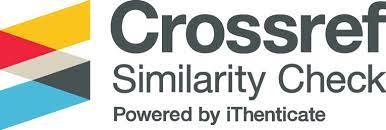Seniors in the financial services market
DOI:
https://doi.org/10.18778/2391-6478.1.33.02Keywords:
senior, financial services, financial security, customer of financial institutions, riskAbstract
The purpose of the article/hipothesis: To determine the trends of changes in the situation of seniors in the financial services market in 2018–2020. The author assesses the standard of living and economic situation of seniors in Poland. The author indicates what factors and conditions affect the activity of seniors in the financial market as well as their safety as clients of financial institutions. According to the author, seniors bear the greater risk while choosing financial products appropriate to their needs and conditions, in comparison with other consumer groups. On a larger scale, this group of consumers is also affected by the risk of mis-selling and fraud, as well as cyber risk. The above-mentioned types of risk are exacerbated by the decreasing availability of financial services that are specifically dedicated to this group of clients.
Research method: Critical analysis of the literature on the subject and results of empirical research and statistical data available. Selected reports of institutions such as the Polish Banks Association, the National Bank of Poland, the Credit Information Bureau as well as reports of advisory and consulting companies were also analyzed.
Research results: Indication of the basic conditions influencing the economic situation of seniors in Poland and their position as consumers of products offered by the financial intermediaries. Defining the basic determinants of seniors' safety in the financial services market. So far, Poland has not developed a system of comprehensive protection of seniors, based on intergenerational solidarity in which, alongside government and local government institutions, financial intermediaries would actively participate.
Downloads
References
Bezpieczne Życie Seniorów (2020) senior.gov.pl/bezpieczny_i_aktywny_senior/strona/76 [dostęp 05.01.2021].
Google Scholar
BIG InfoMonitor (2018). Co siódmy emeryt regularnie pomaga finansowo rodzinie https://media.big.pl/informacje-prasowe/423304/big. [dostęp 21.01.2021].
Google Scholar
BIG InfoMonitor/BIK (2019). Zaległości seniorów wzrosły o 1/3 w ciągu ostatnich 3 lat https://www.money.pl/gielda/big-infomonitor-bik-zaleglosci-seniorow-wzrosly-o-1-3-w-ciagu-ostatnich-3-lat-6442429578700930a.html [dostęp 05.01.2021].
Google Scholar
BIG InfoMonitor/BIK (2020). Osoby 65+ miały 10,4 mld zł https://www.money.pl/gielda/big-infomonitor-bik-osoby-65-mialy-10-4-mld-zl-zaleglosci-na-koniec-xi-2020-r-6599182679578753a.html [dostęp 05.12.2020].
Google Scholar
BIK (2020). Seniorzy najbardziej narażeni na kradzież tożsamości https://www.egospodarka.pl/161452,BIK-seniorzy-najbardziej-narazeni-na-kradziez-tozsamosci,1,12,1.html [dostęp 05.01.2021].
Google Scholar
BIK (2021). Kredytowo-pożyczkowy portret seniorów https://media.bik.pl/informacje-prasowe [dostęp 21.01.2021].
Google Scholar
Czerwiński, B. (2016). Zachowanie seniorów z Polski Północnej na rynku usług finansowych w świetle wyników badań. Handel Wewnętrzny, 3(362), s. 76–87.
Google Scholar
Długi emerytów mniejsze, ale średnie zadłużenie wyższe niż przed rokiem (2021) https://www.money.pl/gielda/big-infomonitor-bik-zaleglosci-seniorow-wzrosly-o-1-3-w-ciagu-ostatnich-3-lat-6442429578700930a.html [dostęp 21.01.2021].
Google Scholar
Emerytury i renty w 2019 r. (2020) https://stat.gov.pl/files/gfx/portalinformacyjny/pl/defaultaktualnosci/5486/32/11/1/emerytury_i_renty_w_2019.pdf [dostęp 15.01.2021].
Google Scholar
FPP (2019). W 2020 roku będzie 315 tys. osób z emeryturą poniżej... https://alebank.pl/fpp-alarmuje-w-2020-r-bedzie-315-tys-osob-z-emerytura-ponizej-minimalnego-poziomu/?id=284832&catid=22870 [dostęp 15.01.2021].
Google Scholar
Gospodarka senioralna w Polsce 2018 – stan i metody pomiaru stat.gov.pl [dostęp 15.01.2021].
Google Scholar
GUS (2019). Sytuacja gospodarstw domowych w 2018 r. w świetle wyników badań budżetów gospodarstw domowych (2019), Warszawa: GUS.
Google Scholar
GUS (2020). Sytuacja gospodarstw domowych w 2019 r. w świetle wyników badań budżetów gospodarstw domowych stat.gov.pl [dostęp 24.01.2021].
Google Scholar
Hipoteka odwrócona. Wielka Brytania i Niemcy podsumowują rok 2019 (2020) https://ceo.com.pl/hipoteka-odwrocona-wielka-brytania-i-niemcy-podsumowuja-rok-2019, [dostęp 16.01.2021]
Google Scholar
Informacja o sytuacji osób starszych w Polsce za 2019 r. (2020) https://www.gov.pl/web/rodzina/informacja-o. [dostęp 10.01.2021].
Google Scholar
InfoSenior 2018 (2018). Raport ZBP https://zbp.pl/public/repozytorium/wydarzenia/images/styczen_2018/ZBP_InfoSenior_18.01_f.pdf [dostęp 20.01.2021].
Google Scholar
InfoSenior 2020 (2020). Raport ZBP http://bde.wib.org.pl/wp-content/uploads/2020/01/200121-raport-infosenior-2020.pdf [dostęp 25.01.2021].
Google Scholar
Kłopocka, A. (2018). Skłonność gospodarstw domowych do oszczędzania a wiedza finansowa. Bank i Kredyt, 49(5).
Google Scholar
Krajowy Rejestr Długów – KRD (2021). Barometr Oszczędności, Raport BIG https://krd.pl [dostęp 04.01.2021].
Google Scholar
Kuchciak, I., Świeszczak, M., Świeszczak, K. i Marcinkowska, M. (2014). Edukacja Finansowa i inkluzja bankowa w realizacji koncepcji Silver Economy. Łódź: Wydawnictwo Uniwersytetu Łódzkiego http://dx.doi.org/10.18778/7969-465-5.
Google Scholar
DOI: https://doi.org/10.18778/7969-465-5
PIU (2020). Rekomendacje działań proklienckich dla rynku ubezpieczeń https://piu.org.pl/wp-content/uploads/2020/04/Rekomendacje_proklienckie_PIU_covid19-1.pdf [dostęp 24.01.2021].
Google Scholar
Prawa seniorów w działalności Rzecznika Praw Obywatelskich (2019) www.rpo.gov.pl [dostęp 21.01.2021].
Google Scholar
Raport Federacji Konsumentów (2021). Wykluczenie cyfrowe podczas pandemii http://www.federacja-konsumentow.org.pl/n,6,1479,1,1,wykluczenie-cyfrowe-podczas-pandemii.html [dostęp 22.01.2021].
Google Scholar
Raport KPMG (2020). Doświadczenie klientów w nowej rzeczywistości https://home.kpmg/pl/pl/home/insights/2020/12/raport-doswiadczenia-klientow-w-nowej-rzeczywistosci.html [dostęp 21.01.2021].
Google Scholar
Raport o hipotece odwróconej w Polsce (2018). Fundusz Hipoteczny Dom, Konferencja Przedsiębiorstw Finansowych w Polsce https://www.funduszhipoteczny.pl/wp-content/uploads/2018/10/Raport-o-hipotece-odwr%C3%B3conej-w-Polsce_KPF-i-FH-DOM_pazdziernik-2018.pdf [dostęp 23.01.2021].
Google Scholar
Rekomendacje 2015 https://zbp.pl/public/repozytorium/dla_konsumentow/ [dostęp 23.01.2021].
Google Scholar
Renta dożywotnia. Ile można dostać? Jak się ubiegać? (2021), eGospodarka.pl - Porady finansowe [dostęp 19.09.2021].
Google Scholar
Sołtysiak, M. (2020). Seniorzy na rynku usług finansowych w Polsce. Zeszyty Naukowe SGGW: Polityki Europejskie, Finanse i Marketing, 24(73) https://doi.org/10.22630/PE-FIM.2020.24.73.39 [dostęp 9.09.2021].
Google Scholar
DOI: https://doi.org/10.22630/PEFIM.2020.24.73.39
Sytuacja osób starszych w Polsce za 2019 r. (2020) https://www.gov.pl/web/rodzina/informacja-o. [dostęp 24.01.2021].
Google Scholar
Uchwała nr 161 Rady Ministrów z dnia 26 października 2018 r., MP 2018, poz. 1169.
Google Scholar
Ustawa z dnia 11 września 2015 r. o osobach starszych, Dz.U. 2015, poz. 1705.
Google Scholar
Ustawa z dnia 23 października 2014 r. o odwróconym kredycie hipotecznym, Dz.U. 2014, poz. 1585.
Google Scholar
Wierzbicka, E. (2019). Znaczenie edukacji ekonomicznej dla bezpieczeństwa finansowego seniorów. Rozprawy Ubezpieczeniowe, 33(3).
Google Scholar
Zasobność gospodarstw domowych w Polsce 2017. Raport z badania NBP https://ssl.nbp.pl/aktualnosci/wiadomosci_2018/Raport_BZGD_2016-prezentacja.pdf [dostęp 25.01.2021].
Google Scholar
(www1) https://media.bik.pl/informacje.prasowe/469800/seniorzy-nadrobili-zaległości-i-maja-juz-ponad-8-8-mld-zl [dostęp 03.01.2021].
Google Scholar
Downloads
Published
How to Cite
Issue
Section
License

This work is licensed under a Creative Commons Attribution-NonCommercial-NoDerivatives 4.0 International License.














